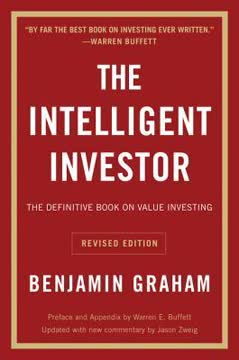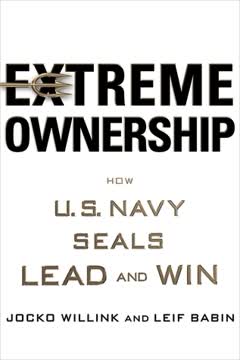Key Takeaways
1. Equilibrium strategies maximize EV and minimize exploitability
"Game theory is about making decisions under conditions of uncertainty."
Equilibrium defined. An equilibrium strategy is one where no player can unilaterally improve their expected value (EV) by deviating from it. In poker, this means constructing betting, calling, and raising ranges such that opponents have no profitable counter-strategy.
Key benefits:
- Guarantees a minimum EV regardless of opponent's play
- Provides a baseline for identifying profitable deviations
- Protects against exploitation by skilled opponents
Practical application. While perfect equilibrium play is impossible for humans, understanding equilibrium concepts helps identify +EV plays and avoid major mistakes. Focus on constructing balanced ranges and recognizing situations where opponents are likely to make errors.
2. Polarized ranges benefit from betting, condensed ranges from checking
"Polarized ranges consist of strong and weak hands but nothing in between."
Range composition matters. A polarized range contains very strong hands (for value betting) and very weak hands (for bluffing), while a condensed range consists primarily of medium-strength hands. Polarized ranges benefit from betting because they put maximum pressure on opponents, while condensed ranges prefer checking to realize equity cheaply.
Strategic implications:
- The player with more nutted hands should generally be the aggressor
- Out-of-position players often have more condensed ranges
- In-position players can bet more thinly for value
Balancing act. To construct a profitable betting range, include enough value bets to justify your bluffs and enough bluffs to make opponents indifferent to calling with bluff-catchers. The ideal ratio depends on the bet size relative to the pot.
3. Position provides strategic advantages in poker
"Acting last is like taking a drink of water. We don't have to understand why it's good for us to know that it is."
Information advantage. The player acting last has more information to make decisions, seeing how opponents have acted before having to act themselves. This allows for more accurate range estimation and better decision-making.
Strategic benefits of position:
- Can realize equity more cheaply by checking behind
- Can bet a wider value range when opponents show weakness
- Has last say in determining pot size
Leveraging position. When in position, look for opportunities to bet thinly for value or bluff after opponents check. When out of position, be more cautious with marginal hands and consider check-raising as a way to regain initiative.
4. Optimal bluffing and calling frequencies depend on pot odds
"The simpler way to express this is that you want a bluff-to-value ratio equal to the size of the bet divided by the bet plus the pot, or Bet/(Bet + Pot)."
Mathematical foundation. The optimal bluffing frequency makes opponents indifferent to calling with bluff-catchers. This frequency is determined by the pot odds being offered.
Key relationships:
- Larger bets allow for more bluffs in a balanced range
- Smaller bets require tighter calling ranges
- The formula for optimal calling frequency is 1 - [Bet / (Bet + Pot)]
Practical application. Use these formulas as guidelines rather than strict rules. Adjust based on specific board textures, opponent tendencies, and your overall strategy. Remember that these frequencies apply to your entire range, not just the hand you currently hold.
5. Exploitative play can increase EV but risks counter-exploitation
"Exploitative strategies approach poker in a completely different way than equilibrium ones."
Risk vs. reward. Deviating from equilibrium to exploit opponent mistakes can increase EV but also leaves you vulnerable to counter-exploitation if opponents adjust.
Four-step process for exploitative play:
- Envision the equilibrium
- Make a specific read on opponent's deviation
- Identify potential exploits
- Determine appropriate degree of adaptation
Balancing act. Consider factors like opponent skill level, sample size of observed tendencies, and game flow when deciding how far to deviate from equilibrium. Be prepared to readjust if opponents catch on to your exploits.
6. Raising constrains value betting ranges and increases polarization
"The threat of a raise reduces the value of the weakest hands in Opal's value betting range."
Strategic implications. The possibility of being raised forces players to bet narrower value ranges, as marginal hands become too weak to bet for value but too strong to bluff.
Effects on betting strategy:
- Fewer thin value bets
- More polarized betting ranges
- Increased importance of strong hands in checking ranges
Raising strategy. Construct raising ranges that are balanced between value hands and bluffs. Target opponents who bet too wide a range or fold too often to raises.
7. Blockers provide key information for bluffing and value betting decisions
"A blocker is a card in your hand that provides information about what is not in your opponents' hands."
Strategic value. Blockers affect the probability of opponents holding certain hands, influencing optimal bluffing, value betting, and calling decisions.
Key applications:
- Bluffing with hands that block the nuts
- Value betting more aggressively when blocking strong hands
- Calling more liberally when blocking potential bluffs
Practical use. When choosing between similar hands for bluffing or value betting, prefer those with relevant blockers. This maximizes your chances of success and minimizes the risk of running into the strongest parts of opponents' ranges.
Last updated:
FAQ
What's "Play Optimal Poker" about?
- Game Theory for Poker: "Play Optimal Poker" by Andrew Brokos is a guide to applying game theory principles to poker, helping players make better decisions under uncertainty.
- Strategic Framework: The book provides a framework for understanding poker strategy through the lens of game theory, focusing on equilibrium strategies and exploitative play.
- Practical Scenarios: It includes practical scenarios and toy games to illustrate complex concepts, making them accessible to players of all levels.
- Improving Decision-Making: The goal is to improve decision-making at the poker table by understanding the underlying mathematical principles.
Why should I read "Play Optimal Poker"?
- Enhance Poker Skills: The book is designed to enhance your poker skills by teaching you how to think strategically using game theory.
- Applicable to All Levels: Whether you're a beginner or an experienced player, the concepts are applicable and can improve your understanding of the game.
- Exploiting Opponents: It provides insights into how to exploit opponents' mistakes while minimizing your own vulnerabilities.
- Confidence in Play: By understanding game theory, you'll feel more confident and better prepared to handle any situation in poker.
What are the key takeaways of "Play Optimal Poker"?
- Equilibrium Strategies: Understanding and applying Nash Equilibrium in poker to make unexploitable plays.
- Polarized vs. Condensed Ranges: Recognizing when to use polarized ranges for betting and condensed ranges for calling.
- Exploiting Mistakes: Learning how to identify and exploit opponents' mistakes while maintaining a balanced strategy.
- Value of Position: Appreciating the strategic advantage of acting last and how it influences decision-making.
How does Andrew Brokos define a "strategy" in poker?
- Complete Algorithm: In game theory, a strategy is a complete algorithm for playing the game, detailing actions for every possible situation.
- Precision Required: It requires more precision than vague descriptions like "tight and aggressive," specifying actions for each hand in every scenario.
- Computer Assistance: Due to the complexity, computers are valuable tools for formulating and storing these strategies.
- Opponent's Strategy: Understanding your opponent's likely strategy is crucial for making informed decisions.
What is Nash Equilibrium according to "Play Optimal Poker"?
- No Incentive to Deviate: Nash Equilibrium is a set of strategies where no player has an incentive to unilaterally change their strategy.
- Perfect Information: Even with perfect information about the opponent's strategy, neither player would want to change their own.
- Example in Poker: In a heads-up game, both players could reveal their strategies, and neither would benefit from changing them.
- Application in Poker: It helps players make decisions that are unexploitable, regardless of the opponent's actions.
How does "Play Optimal Poker" explain polarized vs. condensed ranges?
- Polarized Ranges: Consist of strong and weak hands, used for betting and raising, often with larger bets.
- Condensed Ranges: Consist of medium-strength hands, used for calling and checking, often vulnerable to polarized bets.
- Strategic Use: Polarized ranges apply pressure, while condensed ranges aim to induce bluffs or value bets.
- Real-World Application: Understanding these concepts helps in constructing balanced betting and calling strategies.
What is the "Four-Step Exploitative Process" in "Play Optimal Poker"?
- Envision the Equilibrium: Consider how the hand would play out at equilibrium to understand potential deviations.
- Make a Read: Identify how your opponent deviates from equilibrium, being explicit and specific.
- Identify the Exploits: Determine how to exploit the opponent's mistakes, considering multiple options.
- Determine the Degree of Deviation: Decide how far to deviate from equilibrium based on the opponent's mistake magnitude and your confidence in the read.
How does "Play Optimal Poker" address the value of position?
- Strategic Advantage: Position provides a strategic advantage by allowing the player to act last, gaining more information.
- Double Use of Strong Hands: The in-position player can use strong hands for both value betting and bluff-catching.
- No Need to Split Range: Unlike the out-of-position player, the in-position player doesn't need to split strong hands between betting and checking.
- Informational Edge: Position offers an informational edge, even when the opponent's strategy is unknown.
What are the best quotes from "Play Optimal Poker" and what do they mean?
- "Poker is not about certainty; it is about learning to make good decisions under conditions of uncertainty." This emphasizes the importance of decision-making in poker, even when outcomes are uncertain.
- "The goal of a balanced betting range is to make an opponent indifferent between calling and folding with a bluff-catcher." This highlights the strategic aim of creating difficult decisions for opponents.
- "Game theory is not a panacea. It is not the only lens through which one should view poker, but it is an increasingly indispensable one." This acknowledges the limitations of game theory while stressing its growing importance in poker strategy.
- "Acting last is like taking a drink of water. We don’t have to understand why it’s good for us to know that it is." This underscores the inherent value of position in poker.
How does "Play Optimal Poker" suggest handling opponents who bluff too much?
- Call More Often: Increase your calling frequency with hands that are indifferent at equilibrium.
- Thin Value Raises: Consider making more thin value raises, as the opponent's range is likely weaker.
- Polarized Raising Range: Use a polarized raising range to exploit the opponent's marginal hands.
- Balance Bluffs and Value: Ensure your raising range is balanced with both bluffs and value hands.
How does "Play Optimal Poker" suggest handling opponents who fold too often?
- Bluff More Often: Increase your bluffing frequency, especially with hands that are indifferent at equilibrium.
- Fewer Thin Value Bets: Reduce thin value bets, as the opponent is less likely to call with weak hands.
- Trap with Strong Hands: Consider trapping with strong hands, as the opponent may not bet often.
- Look for Nutty Spots: Identify situations where the opponent is unlikely to have strong hands and exploit them.
What role do blockers play in "Play Optimal Poker"?
- Information Advantage: Blockers provide information about what is not in opponents' hands, offering a strategic edge.
- Bluffing Candidates: Blockers are often used as tiebreakers when choosing bluffing candidates.
- Value Betting Decisions: Blockers can influence thin value betting decisions by reducing the risk of running into stronger hands.
- Strategic Application: Understanding blockers helps in constructing balanced and effective betting and bluffing ranges.
Review Summary
Play Optimal Poker receives mostly positive reviews, with readers praising its approach to game theory and poker strategy. Many find it an excellent introduction to GTO concepts, using simple examples to explain complex ideas. The book is appreciated for its effectiveness in teaching and quizzing readers. Some criticisms include the lack of practical applications and the need for more in-depth explanations. Overall, readers value the book for its innovative perspective on poker strategy, though some suggest it's best suited for intermediate players or those new to game theory concepts.
Similar Books








Download PDF
Download EPUB
.epub digital book format is ideal for reading ebooks on phones, tablets, and e-readers.




